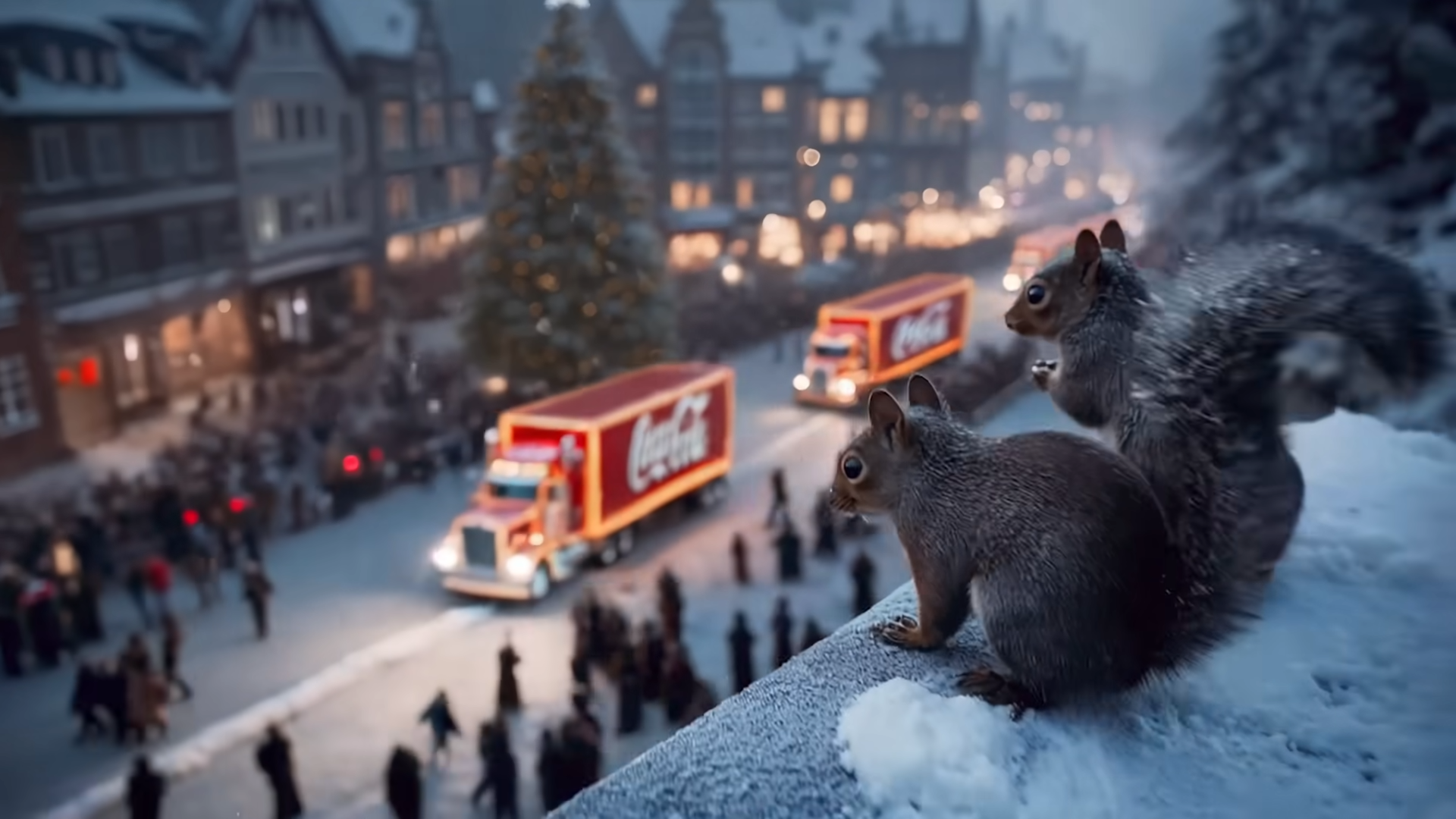Coca-Cola’s AI‑Generated Holiday Ad Draws Mixed Reactions

Key Points
- Coca‑Cola released a holiday commercial created with generative AI.
- The ad features iconic red trucks and animals like polar bears, rabbits, and sloths.
- Visual quality improves over the previous AI effort, with realistic wheel movement and better lighting.
- Inconsistent visual styles and a lack of emotional warmth persist.
- The move highlights a growing trend of AI in core creative advertising.
- Critics warn that reliance on AI may diminish the human connection that audiences expect.
- Comparisons are drawn to other brands that continue to use human‑focused holiday storytelling.
Coca-Cola released a new holiday commercial created with generative AI. The spot features the brand’s iconic red trucks traveling through snowy forests accompanied by animals such as polar bears, rabbits and sloths. While visual quality has improved compared to the previous AI effort—showing more realistic movement and lighting—the ad still feels detached and lacks the emotional warmth that defined earlier campaigns. Industry observers note the move signals a broader shift toward AI in core creative work, but also warn that reliance on machines may erode the human spark that connects with audiences.
AI Takes the Wheel on Coca‑Cola’s Festive Campaign
Coca‑Cola has turned to generative artificial intelligence to produce its latest holiday commercial. The new spot keeps the brand’s signature red trucks, but replaces most human figures with wildlife, including polar bears, rabbits and sloths navigating snowy landscapes. This shift appears intended to avoid the uncanny‑valley issues that plagued the previous AI‑generated ad, where unrealistic lighting and awkward human likenesses drew criticism.
Visual Improvements Yet Persistent Shortcomings
Compared with the earlier effort, the animation shows clearer technical progress. The truck wheels now rotate realistically, and the lighting and environmental details appear more coherent. However, the visual style remains uneven; some scenes look polished while others appear cartoonish or under‑rendered. More importantly, the commercial continues to lack the genuine emotional connection that made the brand’s historic holiday ads beloved, leaving viewers with a sense of imitation rather than authentic nostalgia.
Implications for Advertising and Brand Identity
The decision to place AI at the forefront of a flagship campaign signals a broader industry trend toward machine‑driven creativity. By showcasing AI‑generated video, Coca‑Cola signals that major advertisers are exploring efficiency gains beyond back‑office tasks. Critics caution that such cost‑saving approaches risk sacrificing the human spark that fuels genuine consumer emotion.
Industry Context and Consumer Expectations
The shift arrives at a time when other retailers, such as a major UK department store known for its annual holiday ads, continue to rely on human‑centric storytelling that resonates deeply with audiences. Observers suggest that Coca‑Cola’s AI experiment may be perceived as a departure from that tradition, potentially affecting the brand’s image among consumers who value heartfelt holiday messaging.
Future Outlook
While the new ad marks a technical step forward, its mixed reception underscores the challenge of balancing innovation with emotional authenticity. As AI tools become more capable, brands like Coca‑Cola will need to navigate the fine line between efficiency and the timeless appeal of human‑driven storytelling.